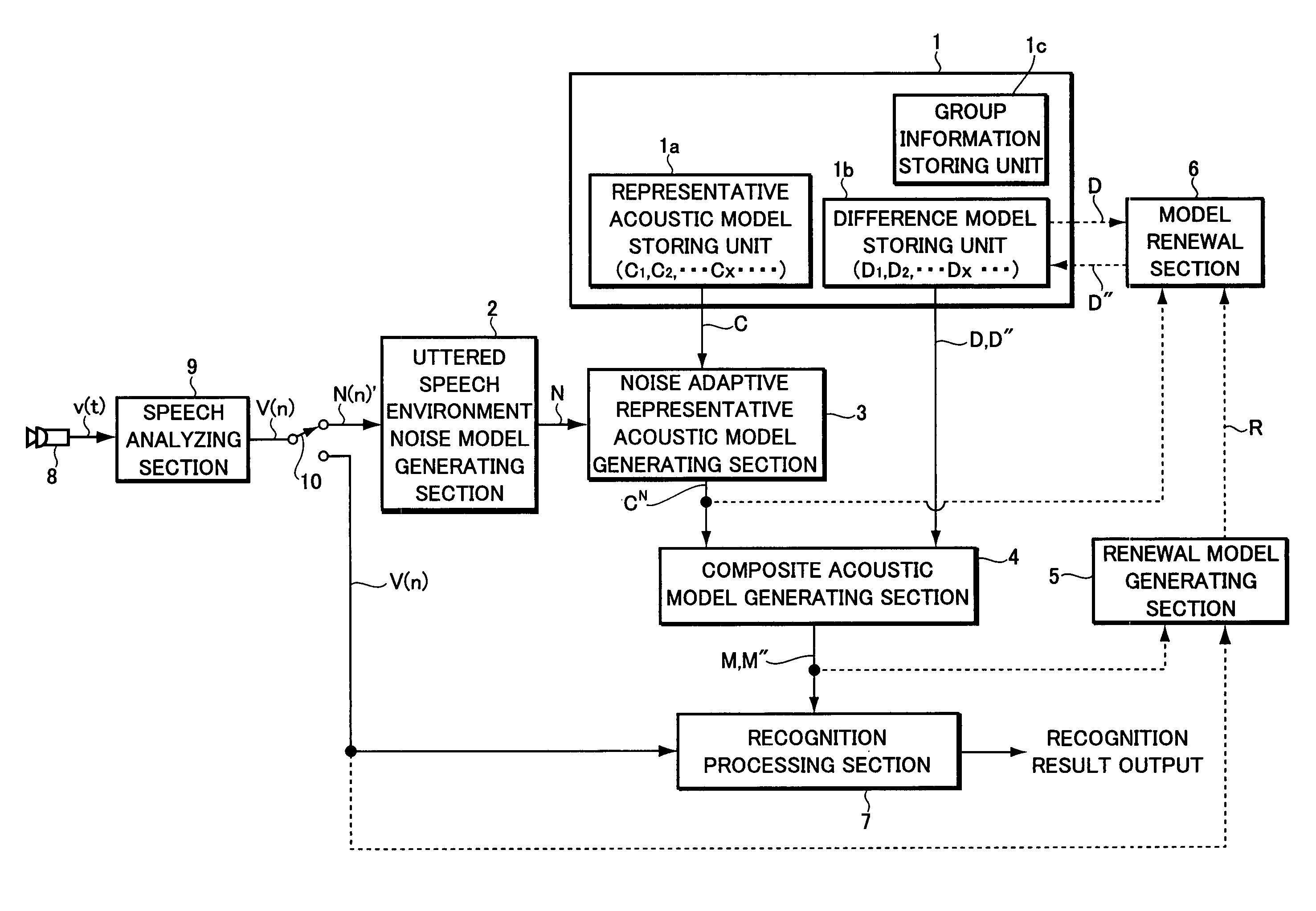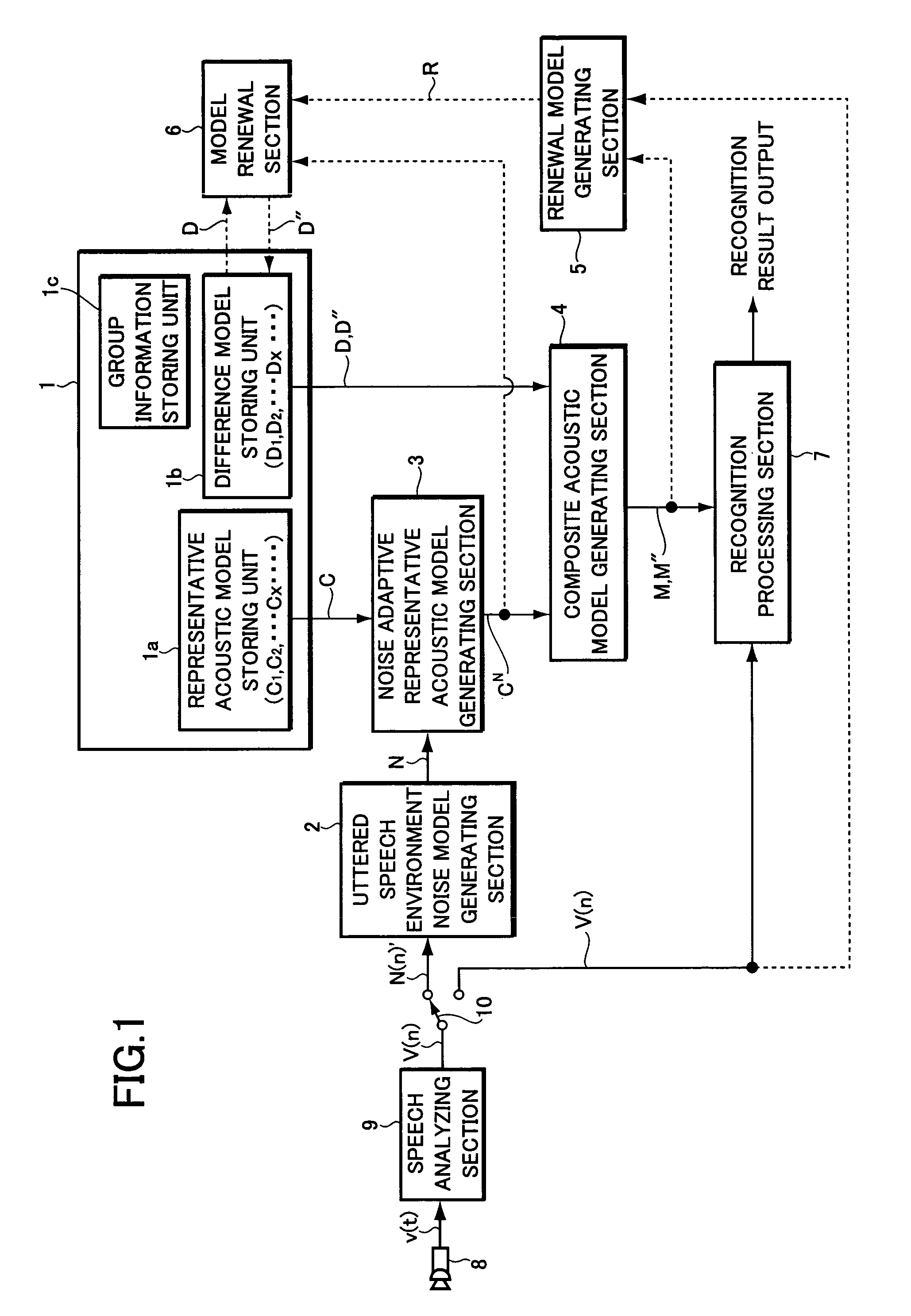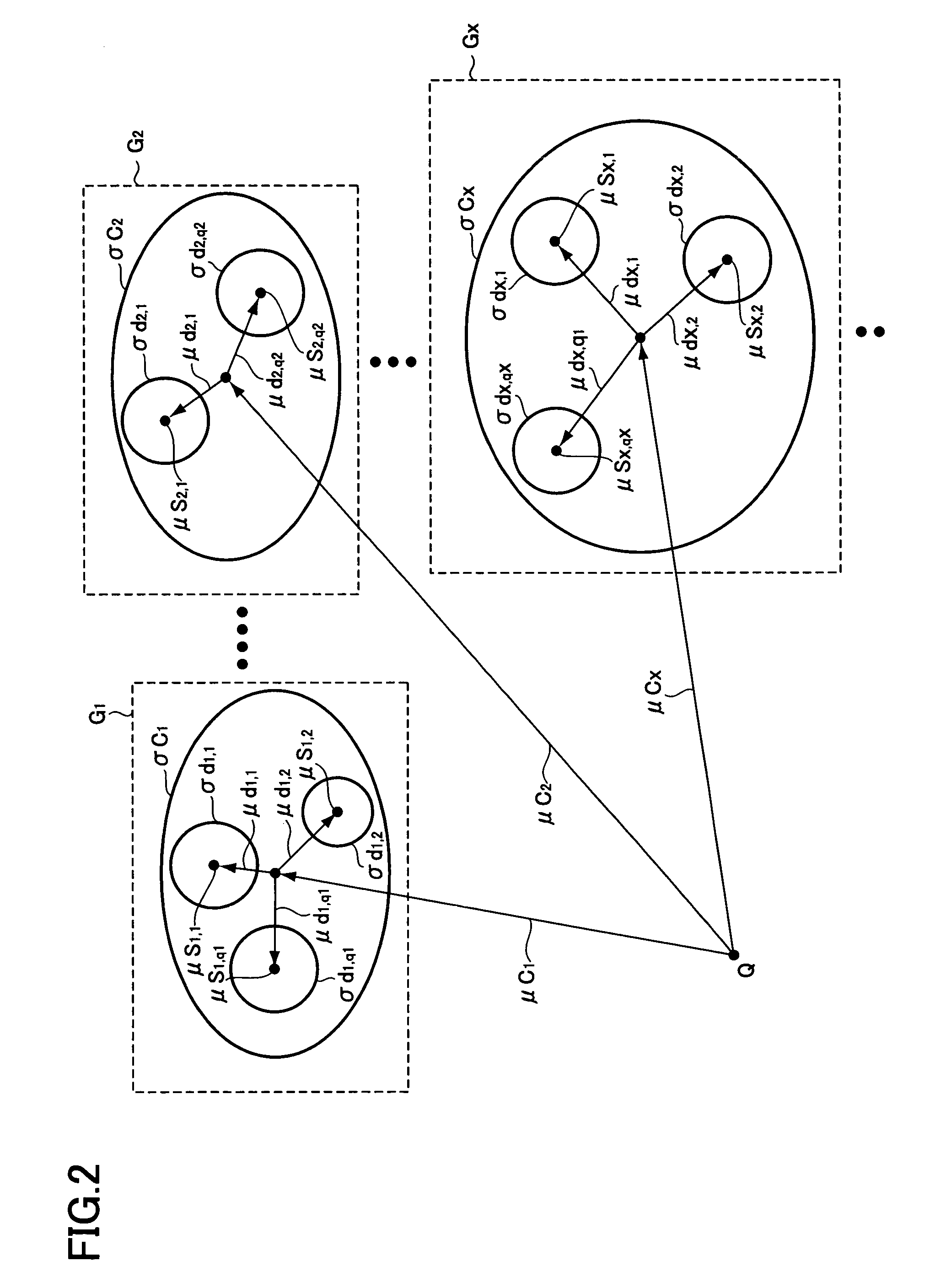Apparatus and method for speech recognition
a speech recognition and speech recognition technology, applied in speech recognition, speech analysis, instruments, etc., can solve the problems of obstructing the improvement of speech recognition performance, requiring a large amount of processing, and hindering the increase of the number of initial acoustic models, so as to reduce the amount of processing
- Summary
- Abstract
- Description
- Claims
- Application Information
AI Technical Summary
Benefits of technology
Problems solved by technology
Method used
Image
Examples
first embodiment
[0025]The first embodiment of the present invention will be explained referring to FIG. 1 through FIG. 7. FIG. 1 is a block diagram showing a structure of a speech recognition apparatus of the present embodiment.
[0026]As shown in FIG. 1, the speech recognition apparatus has a structure for recognizing speech using HMM, and comprises a storing section 1 which previously stores data of acoustic model or the like, an uttered speech environment noise model generating section 2, a noise adaptive representative acoustic model generating section 3, a composite acoustic model generating section 4, a renewal model generating section 5, a model renewal section 6, and a recognition processing section 7.
[0027]Furthermore, the speech recognition apparatus employs a switch 10 and a speech analyzing section 9 which generates and outputs the feature vector series V(n) in the cepstrum domain every predetermined frame period using a cepstrum transformation of an input signal v(t) from a microphone 8....
second embodiment
[0126]The second embodiment of the present invention will be explained, hereinafter, referring to FIG. 8 and FIG. 9. FIG. 8 is a drawing for illustrating the structure of the speech recognition apparatus of the present embodiment. FIG. 8 has the same reference numerals and codes as those of FIG. 1 with regard to members having the same function.
[0127]The difference between the speech recognition apparatus of the second embodiment and that of the first embodiment is as follows. In the speech recognition apparatus of the first embodiment, the speech recognition is performed after the generation of the renewal difference model D″ adapted to noise and speaker as explained referring to the flowcharts in FIG. 6 and FIG. 7. On the other hand, the speech recognition apparatus of the present embodiment executes the speech recognition and the generation of the renewal difference model D″, simultaneously, by the renewal processing of the renewal model generating section 5 and the model renewal...
PUM
 Login to View More
Login to View More Abstract
Description
Claims
Application Information
 Login to View More
Login to View More - R&D
- Intellectual Property
- Life Sciences
- Materials
- Tech Scout
- Unparalleled Data Quality
- Higher Quality Content
- 60% Fewer Hallucinations
Browse by: Latest US Patents, China's latest patents, Technical Efficacy Thesaurus, Application Domain, Technology Topic, Popular Technical Reports.
© 2025 PatSnap. All rights reserved.Legal|Privacy policy|Modern Slavery Act Transparency Statement|Sitemap|About US| Contact US: help@patsnap.com



